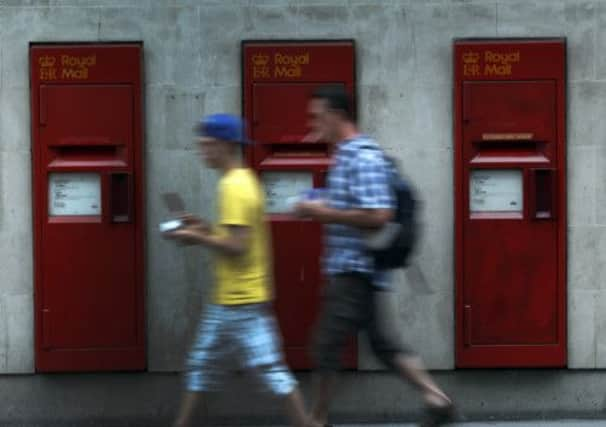Leaders: Royal Mail | A9 upgrade


Baroness Thatcher drew the line, she said at the time, at “privatising the Queen’s head”. Arguably, Mr Cable is not doing that either as the Post Office, which issues stamps, is not to be privatised. But Royal Mail, which delivers letters and parcels, is to be sold to private investors.
The distinction may well be lost on many people. Royal Mail vans and post boxes in their bright red livery and bearing the royal arms are as familiar a part of the landscape and culture of Britain. The thought that they will be in private hands will stick in many throats.
Advertisement
Hide AdAdvertisement
Hide AdThe rationale behind much of the late Baroness Thatcher’s privatisations was to relieve taxpayers of the need to keep subsidising loss-making industries which could be made profitable in the private sector. That is not the case with Royal Mail which, admittedly after several years of losses, is now profitable.
The argument now is that Royal Mail has to adapt to a world which has embraced the internet for the sending of written messages, steadily reducing the number of letters being sent, and for shopping, increasing the number of parcels requiring delivery.
This entails big investment in equipment, the cost of which would otherwise fall on the taxpayer. But when sold by the state, private investors will have to pick up that cost while the government collects a handy few billion, some of which it says it will invest in post offices.
Most people will be a lot less concerned by these matters of high finance than by the worry of what will happen to the postal service. While businesses can make use of competing delivery services, it is extremely difficult for individuals to do so, which leaves them at the mercy of what will be a private monopoly.
Mr Cable has said that Royal Mail’s universal service obligation – which means, among other things, that it is obliged to deliver to every household, no matter how remote, for the same price – will be maintained.
It may be that the eventual owners are able to produce some improvements to the service, though this is hard to imagine given the tendency to dwindling revenues. But Scotland will have some special concerns, given that postal deliveries to remoter areas as they are now will probably never make money, and a legal underpinning today does not give a legal underpinning in perpetuity. What guarantees are there that they will not see a diminuation of the six day service or face some premium in price if the company who runs the mail service makes demands at some point in the future? And in many communities, the postie is a far greater part of the community than just a mail delivery system.
Scots will have to see the fine detail in this plan to be convinced it is in their best interests.
A9 upgrade must start earlier
TRAGICALLY, the A9 has claimed more lives. A mother and daughter and a man died and three more people were injured in a collision between two vehicles on a single-carriageway section of the road near Kingussie on Tuesday evening.
Advertisement
Hide AdAdvertisement
Hide AdThe victims, according to police, were all visitors to the area and so may have been unaware of the lethal reputation of the road. They may have been attracted to the Highlands because of the region’s beauty. There is only one solution to prevent this kind of carnage on the main artery between the Highland capital and central Scotland, which is for it to become dual carriageway its entire length. The Scottish Government has embarked on the process of achieving this, but it will be fully a decade and perhaps even longer before it is complete.
This dreadful accident should, however, prompt a reassessment of the timetable. The first section scheduled for dualling is a stretch between Kincraig and Dalraddy in the long single carriageway stretch between Kingussie and the Slochd summit, which is where the frustrations of drivers stuck in long queues behind slower-moving lorries and buses with little chance of overtaking are probably greatest, raising the risk of accidents.
Work is not due to start, however, until 2015-16, which means it could be five years before this upgrade is completed. These fatalities should surely mean that the case for an earlier start should be examined.
The same applies to the rest of the route, where a complete dual carriageway between Perth and Inverness is not foreseen before 2025. The economic case for swifter dualling is already strong; reducing the death and injury toll should make it imperative.